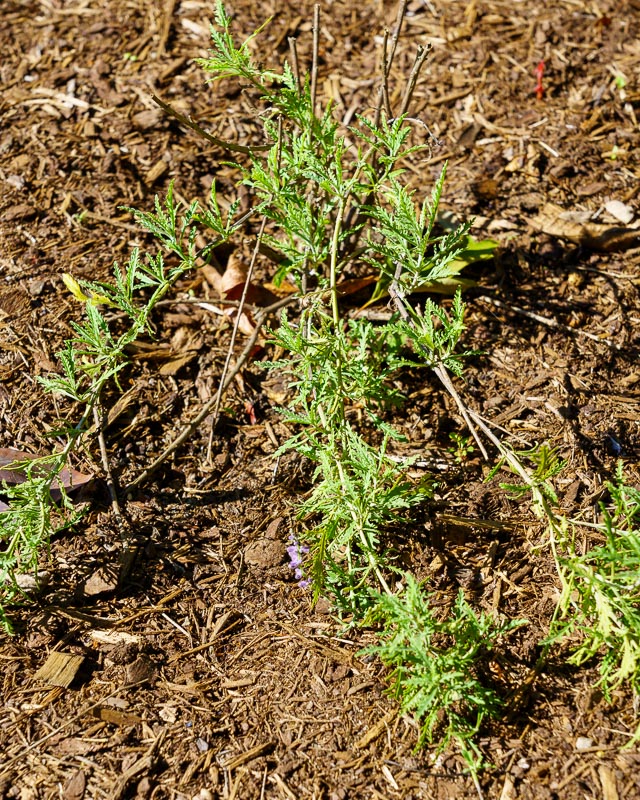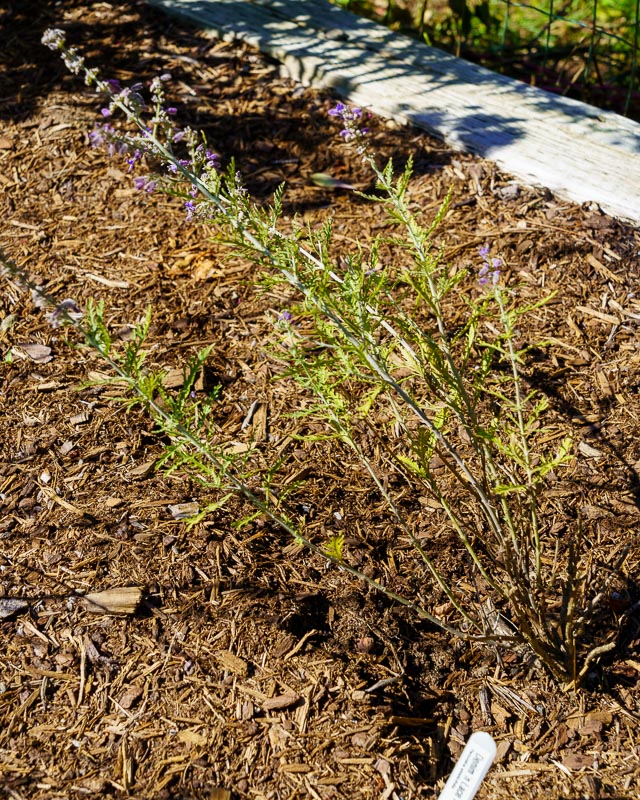'Denim 'n Lace' Russian Sage
| Attribute | Value |
|---|---|
| Common Name | 'Denim 'n Lace' Russian Sage |
| Botanical Name | Perovskia atriplicifolia 'Denim 'n Lace' |
| Mature Size | 28 - 34” tall, 36” wide |
| Sun Exposure | Full Sun |
| Soil Type | Well drained |
| Soil pH | 7 to 9 |
| Bloom Time | Mid summer through mid fall |
| Flower Color | Lavender Blue |
| Care | Russian sage is a tough plant that needs little care. Being tall, it often requires support (either with stakes or a peony ring) if grown individually, lest it flop over. If grown in masses, the plants help to support one another. But the primary care concern with these plants is pruning, which is optional. As a member of the mint family, the Russian sage spreads by runners and needs to be monitored to keep it out places where you don't want it to spread. Pull up suckers in the early spring. Divide the plants every four to six years to refresh them. |
| Soil | These bushes thrive in well-drained ground but will tolerate clay soil. They prefer alkaline soils of pH 7 and greater but can tolerate a wide range of soil pH. |
| Water | New transplants need regular watering, but once established, Russian sage is very drought-tolerant. It likes medium to dry soil and will do fine in hot, dry areas of your yard or garden. Russian sage will not grow well in excessively wet, poorly-draining soil. |
| Temperature and Humidity | Indigenous to central Asia, Perovskia atriplicifolia can be grown in planting zones 5 through 9 and may survive winter in zone 4 if you provide some protection during winter. |
| Fertilizer | This plant is easily grown in average, dry to medium, well-drained soils. At most, you might provide a light layer of compost in the spring. |
| Pruning | Some gardeners choose to prune Russian sage annually. The argument for pruning is that the plant will grow to be bushier as a result of this care. At the very least, it's a good idea to cut off any dead branches to keep this perennial tidy. The normal time to prune Russian sage is early spring or mid-spring, depending on the strategy you adopt. One reason why spring is the best time to prune (as opposed to trimming in fall) is that leaving the silver branches adds interest to the winter landscape. Another is that if you trim in the fall and don't get a hard freeze, the plant could start producing new growth. If it does, a hard freeze could kill the new growth. There are two basic trimming strategies: One is to prune down to within a few inches of ground level in early spring and just be done with it. The other approach is to wait until mid-spring and allow the plant stems to start to fill in with leaves. You'll be able to identify the dead stems as the ones that aren't filling in, and you can proceed to cut them off. Then, make a judgment regarding the remaining branches. For example, if you want to start out with stems that are 1 foot tall, make your cut at 1 foot. The taller the plant starts out in spring, the taller it will end up in fall. |
| Source | https://www.thespruce.com/low-maintenance-russian-sage-2132729 |

